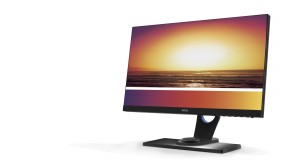The Easy Status Quo, or the More Difficult Option

I recently had a faculty member ask about whether they could present their power point, and use the presenter tools. They had some notes they wanted to be able to read, and see their timing.
Unfortunately, they were in a room with a dedicated computer. So, the computer went to a switcher and was distributed to the local monitor and then the projector from there. Since the computer could not recognize multiple displays, it would not recognize multiple displays, and the presenter tools would be useless, as the audience would see them as well.
In discussing this with colleagues, it got us to thinking that this was a perfectly reasonable request, and one that we have had a few times over the past few years. We have even seen some in a panic, as they rely on their notes. However, another equally valid point was raised. If we were to design a system that allowed the users to “extend” their desktop, would this cause and equal amount of trouble and frustration? In other words, would one user leave it in extended mode and then next user be frustrated because they don’t know how to get out of it?
In fact, we see this type of trouble call almost as often. Particularly with Mac laptops. Often, these laptops will automatically start up in extended mode. We will get panicked calls from people who don’t know what is going on. The tell tale for this is when they tell us the projector shows “some weird space image.”
So, I ask you rAVe fans. Why do you do? Do you have a sophisticated and easy way to allow people to use the extended tools when they want them, without leaving other users in a pinch? If so, please share. If not, do you err on the side of caution or give the most options possible? Should users be expected to understand the difference between the two modes?





